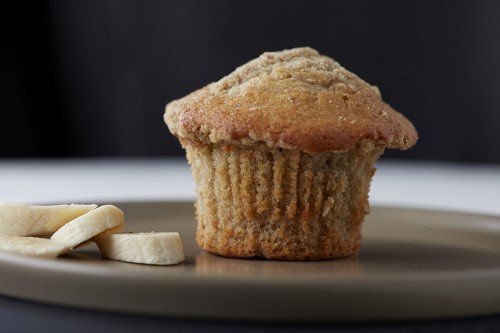
- What is the low-fiber diet?
- Are there other names for this diet?
- How does the low-fiber diet help people with cancer?
- What are the basic principles of the low-fiber diet?
- What are the foods you can eat on the low-fiber diet?
- What are the foods to avoid on the low-fiber diet?
- Are there medications to avoid while on the low-fiber diet?
- What are some common concerns of people on the low-fiber diet, and how do you solve them?
- What are some tips for people on the low-fiber diet?
- What are tips for caregivers helping people who are on this diet?
What is the low-fiber diet?
The low-fiber diet is an eating plan used to reduce the amount of undigested food that passes through the body. It involves limiting how much fiber you eat in a day so that your body produces less stool. The low-fiber diet may help lessen such symptoms as abdominal cramping, bloating, and diarrhea.
Are there other names for this diet?
Other names for the low-fiber diet include the fiber-restricted diet and the low-residue diet.
How does the low-fiber diet help people with cancer?
Certain cancer treatments irritate the digestive tract or make it difficult to pass stool. The low-fiber diet can promote the movement of solid food through the digestive tract. This lessens the risk of bowel obstructions. The low-fiber diet may help people who have had bowel surgery, who are receiving radiation in areas of the body that affect the digestive tract, or who have a bowel obstruction or a narrowing of the bowels.
What are the basic principles of the low-fiber diet?
- Limit the amount of fiber you consume in a day to 12 grams. Avoid foods with more than 2 grams of fiber per serving. Grains are a good place to start when you are looking for ways to eliminate fiber from your diet. If whole grains are part of your diet, switch to grains made with white flour or refined flour.
- Staying hydrated can help you stay regular. Drink at least 8 to 10 cups of fluid every day.
- Limit beverages containing high-fructose corn syrup to 12 ounces per day. Avoid beverages sweetened with sorbitol or other sugar substitutes.
- Raw vegetables and even certain cooked vegetables can irritate the gastrointestinal tract. Eat vegetables that are well cooked and choose fruits that have a soft texture, like melon and bananas. Avoid vegetables that can cause gas, such as broccoli, brussels sprouts, and cabbage. Remove thick skins and seeds from fruits and vegetables.
- Limit fats and oils to less than 8 teaspoons a day if you are having diarrhea. Fat can make diarrhea worse.
- If you are lactose intolerant, drinking milk products from cows or goats may make diarrhea worse. Take extra care when choosing dairy products. Opt for lactose-free dairy or try dairy alternatives.
- As symptoms improve, introduce problem foods back in to your diet slowly and in small amounts.
What are the foods you can eat on the low-fiber diet?
| FOOD GROUPS | FOODS TO INCLUDE |
|---|---|
| Grains | Bread, bagels, rolls, crackers, and pasta made from white flour or refined flour Cereals made from white flour or refined flour (corn flakes, puffed rice, cream of wheat, cream of rice, and refined grits) |
| Proteins | Tender, well-cooked, lean skinless meats that have been prepared without added fat (beef, fish, lamb, pork, and poultry) Lean deli meats Well-cooked eggs Tofu Smooth nut and seed butters (almond, peanut, and sunflower) |
| Dairy | Lactose-free milk Fortified nondairy milks (almond, cashew, coconut, and rice) Lactose-free yogurt Kefir Lactose-free ice cream Lactose-free cottage cheese |
| Vegetables | Well-cooked vegetables without seeds or skins Potatoes without skin Strained vegetable juice |
| Fruit | Most fruit juices Ripe bananas Melons (cantaloupe, honeydew, and watermelon) Peeled apples Canned soft fruits in juice, except pineapple |
| Fats and Oils | Unsaturated oils (olive, peanut, soy, sunflower, and canola) Soft or liquid margarines and vegetable oil spreads Salad dressings |
| Beverages | Water Decaffeinated coffee Caffeine-free tea Rehydration drinks containing electrolytes |
What are the foods to avoid on the low-fiber diet?
| FOOD GROUPS | FOODS TO AVOID |
|---|---|
| Grains | Whole-wheat or whole-grain breads, rolls, crackers, and pasta Brown and wild rice Barley, oats, and other whole grains, such as quinoa Cereals made from whole grains or bran, such as shredded wheat or bran flakes Breads and cereals made with seeds or nuts Popcorn |
| Proteins | Fried meat, poultry, and fish High-fat deli meats, such as ham or roast beef High-fat cured meats, such as bologna or salami Sausage and bacon Hot dogs Fatty or marbled meat Beans, peas, and lentils Hummus Nuts and seeds (coconut, chia seeds, and flaxseed) Crunchy nut butters (including almond and peanut) |
| Dairy | Any dairy products that contain lactose, if lactose intolerance is a problem |
| Vegetables | All raw vegetables All fried vegetables Cooked vegetables known to cause gas (beets, broccoli, brussels sprouts, cabbage, cauliflower, collard greens, mustard greens, turnip greens, corn, kale, lima beans, mushrooms, okra, onions, potato skins, and spinach) |
| Fruit | Most fresh fruit All dried fruit, especially prunes and raisins Fruit juice with pulp Canned fruit in heavy syrup Fruit sweetened with sorbitol Prune juice |
| Fats and Oils | Butter Lard Full-fat mayonnaise |
| Beverages | Caffeinated coffee Caffeinated tea Soda Sparkling water Energy drinks Alcoholic beverages |
| Sweeteners | Sugar alcohols, such as xylitol and sorbitol Sugar substitutes, such as aspartame and sucralose Honey |
Are there medications to avoid while on the low-fiber diet?
No. If you are unsure, speak with your doctor or dietitian.
What are some common concerns of people on the low-fiber diet, and how do you solve them?
| CONCERN | SOLUTION |
|---|---|
| How do I follow a healthy diet without fresh fruits and vegetables? | The best way to stay healthy on the low-fiber diet is to include a wide variety of foods in your diet. Incorporate well-cooked vegetables and canned or raw fruits that are soft in texture. Enjoy small portions of fruits and vegetables in smoothies, shakes, or soups in combination with other nonfibrous ingredients. Ask your doctor when you can begin to introduce fiber back in to your diet. |
| Am I going to be constipated without fiber and whole grains in my diet? | Drinking plenty of fluids is the best way to stay regular. Exercise can also help. Ask your doctor how much physical activity you can incorporate in your day. |
What are some tips for people on the low-fiber diet?
- Drink plenty of fluids to avoid constipation. Water (bottled or tap) or rehydration drinks with electrolytes are good options, since sparking beverages and energy drinks should be avoided.
- Take small bites and chew your food well.
- If you have diarrhea, avoid foods that are high in fat and that contain lactose.
What are tips for caregivers helping people who are on this diet?
- Utilize kitchen tools — such as an immersion blender, food processer, or juicer — for creative ways to incorporate fruits and vegetables safely. This breaks down the fiber in fresh produce, making it easier to digest.
- Use cooking methods that keep foods moist and soft (simmering, poaching, stewing) rather than methods that dry out foods (grilling, roasting, broiling).
